The role of wood at Noma restaurant
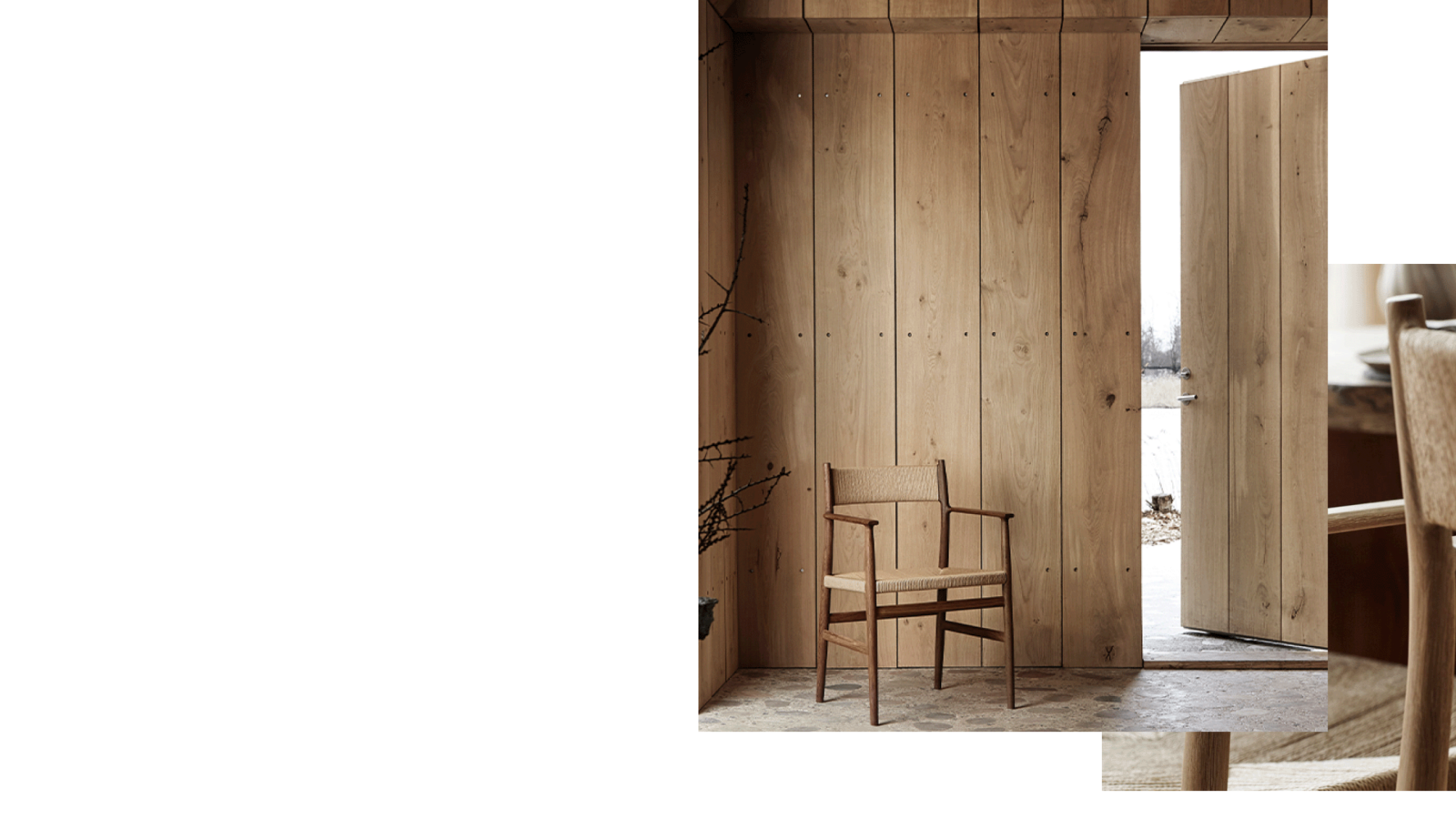
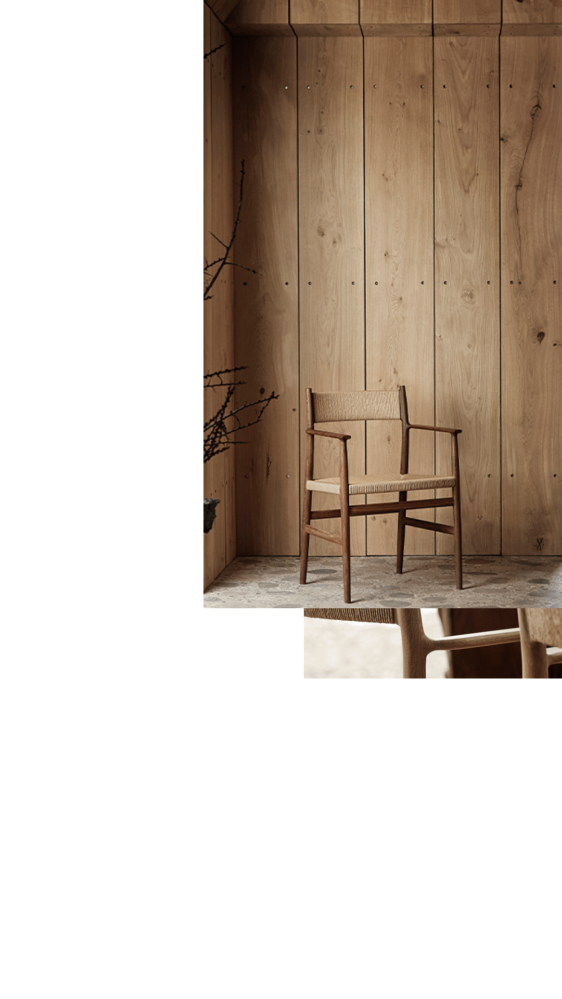
At Noma, wood is integral to the restaurant’s design, reflecting its deep connection to nature. From furniture to architecture, wood adds warmth and artistry, enhancing the dining experience with a natural, Nordic touch.

René Redzepi, the visionary chef behind Noma, sought a dining space that would reflect the precision and artistry of his culinary creations. The environment had to be as meticulously crafted as his food, creating a seamless connection between the plate and the place. In collaboration with some of the most renowned designers and artisans, Noma’s space was shaped using wood as the central element—bringing warmth, nature, and elegance into every corner. This thoughtful design perfectly complements Redzepi’s work, enhancing the overall dining experience through subtle, harmonious details.
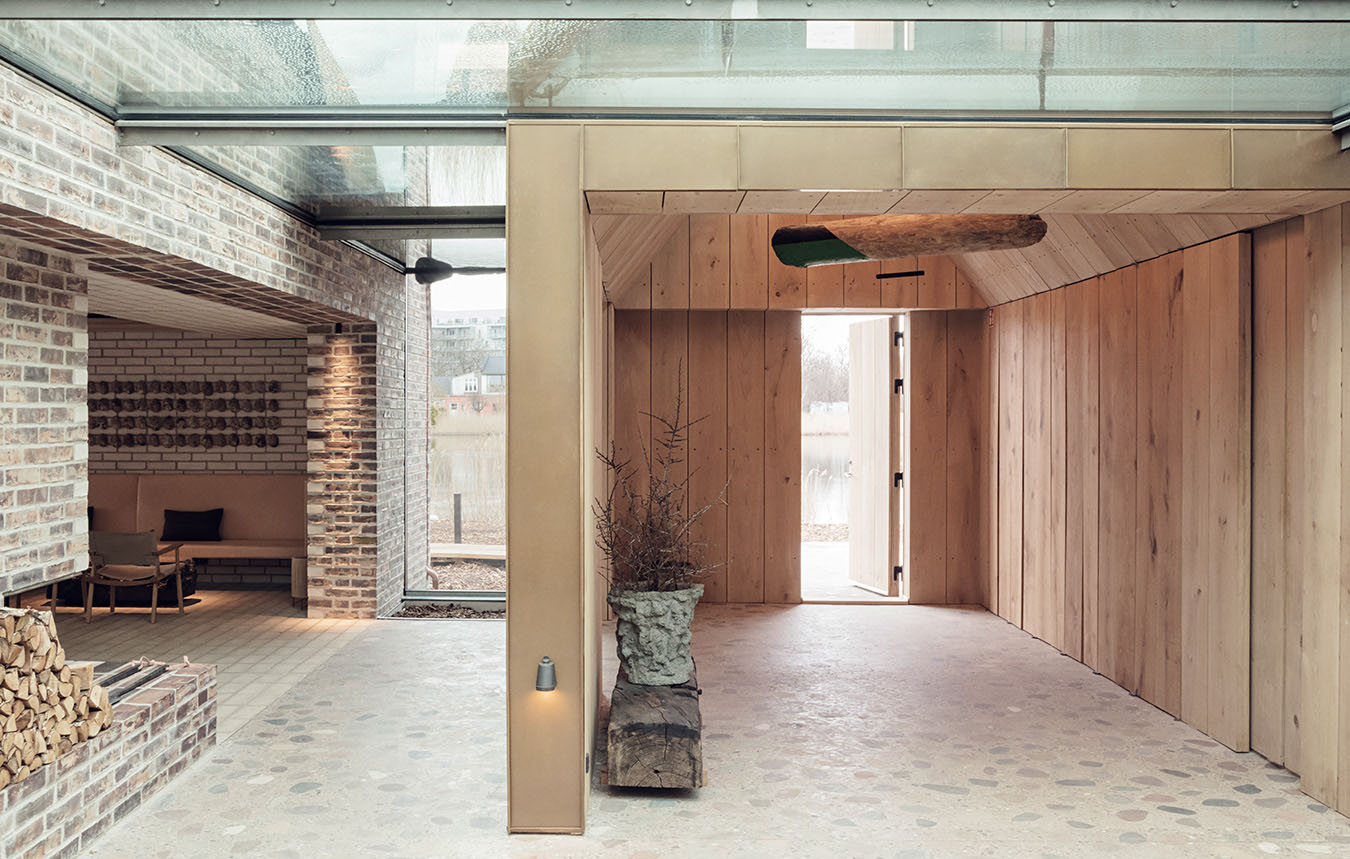
The Architecture: Bjarke Ingels and David Thulstrup’s Vision —
Noma’s architecture, designed by the celebrated Bjarke Ingels and interior designer David Thulstrup, places wood at the heart of the restaurant’s aesthetic. The use of wood dominates the space in a way that feels both comforting and contemporary, reminiscent of the warmth of a grandmother’s country house, yet infused with Norwegian influences. The design effortlessly blends the rustic charm of natural materials with unapologetically modern elements, creating a space that is as inviting as it is sleek.
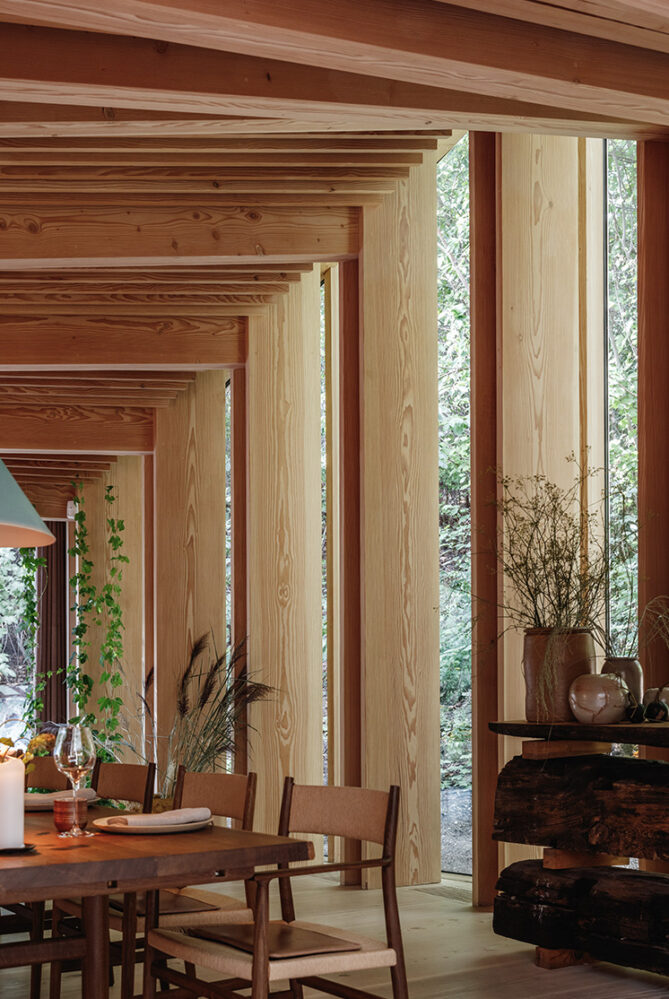
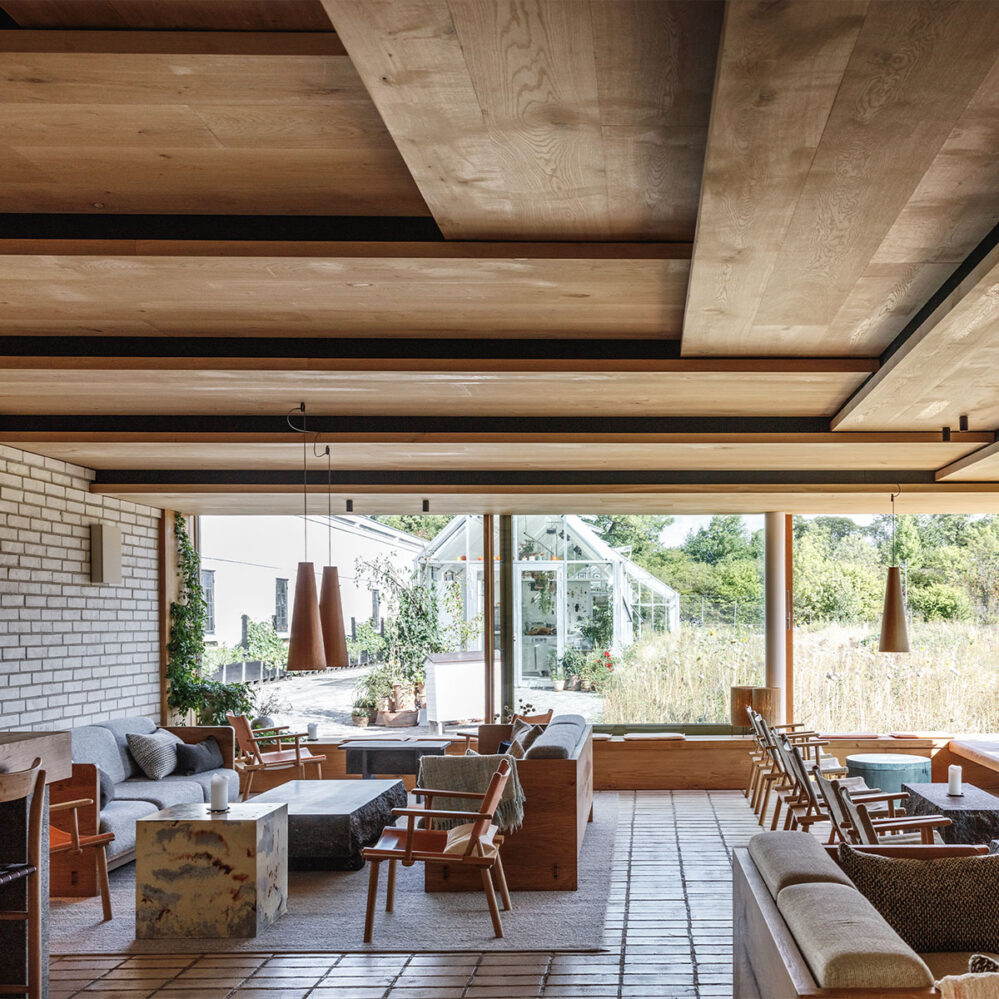
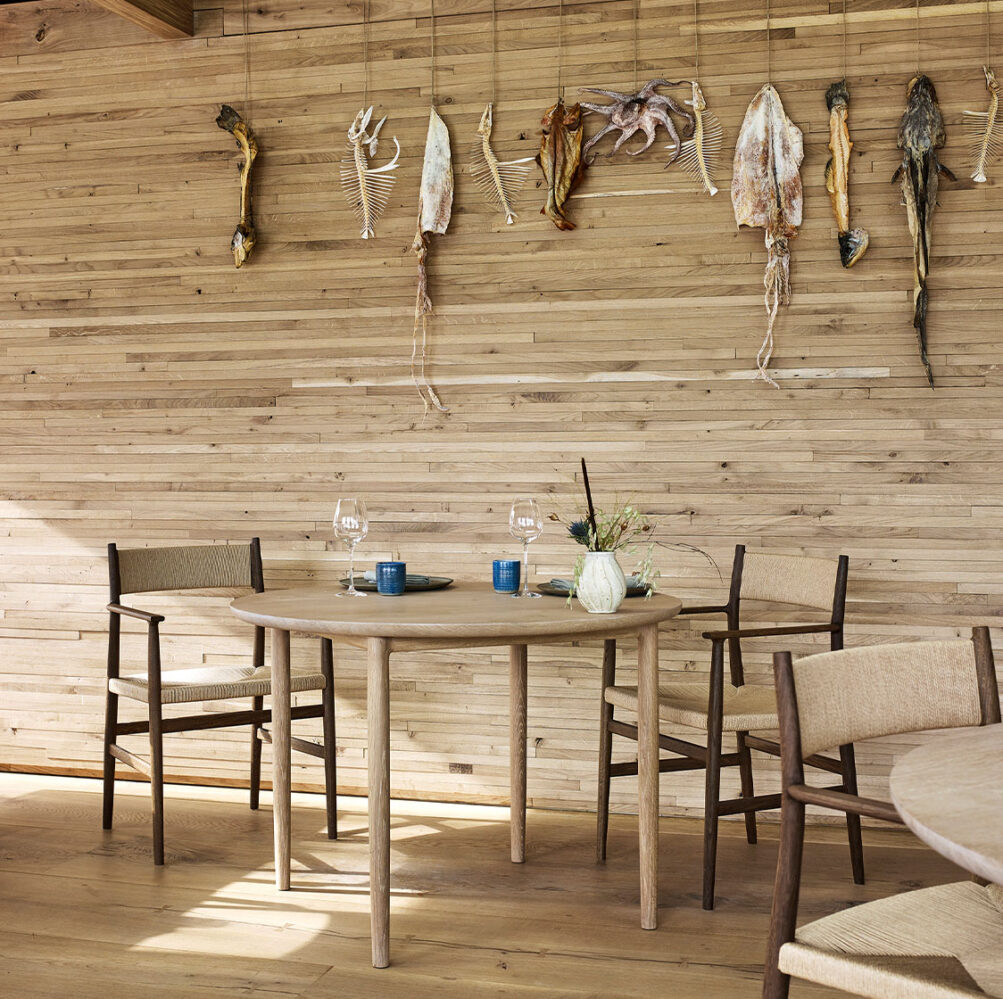
Wide oak boards stretch across the flooring, grounding the restaurant in nature while exuding a sense of calm and understated luxury. The generous use of oak throughout the space adds texture and warmth, softening the minimalist design and fostering an environment that is both soothing and sophisticated. The architectural details reflect the balance of tradition and innovation—qualities that echo in Redzepi’s cuisine.
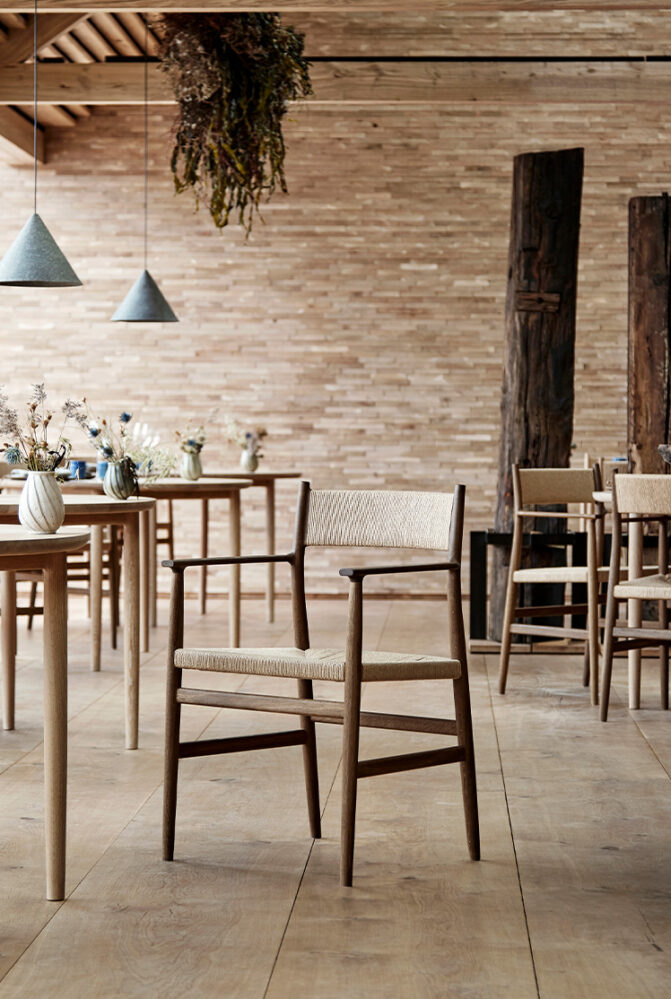
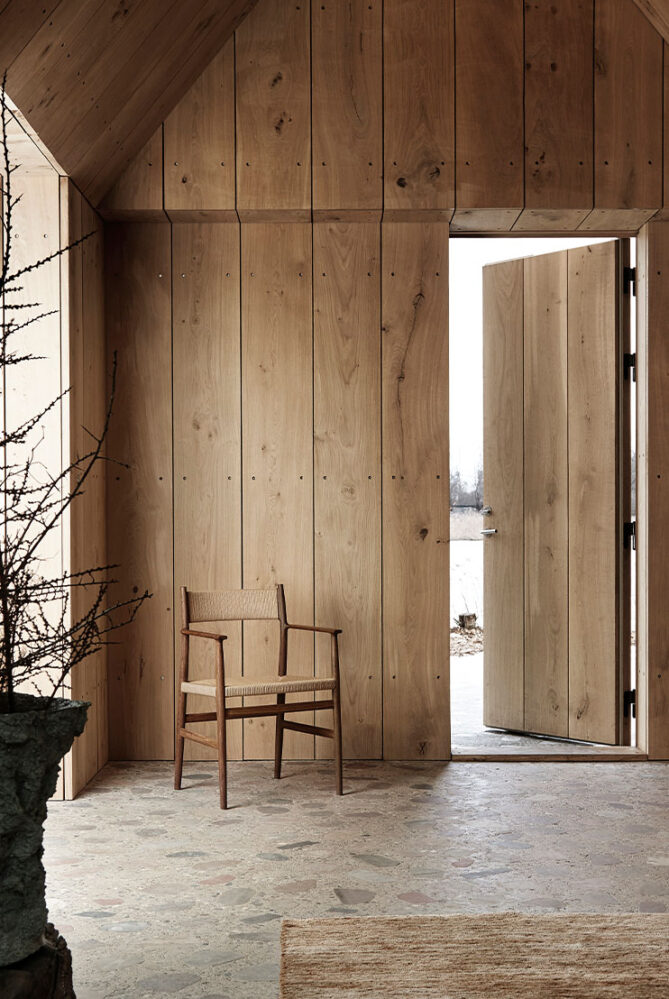
The Furniture: A Collaboration of Craftsmanship —
René Redzepi’s insistence on handmade craftsmanship is reflected in every piece of furniture at Noma, a collaboration between David Thulstrup and fifth-generation Danish furniture maker Brdr Krüger. Drawing inspiration from residential rather than typical hospitality design, the furniture emphasizes natural materials as the primary form of decoration, avoiding any superfluous embellishments.
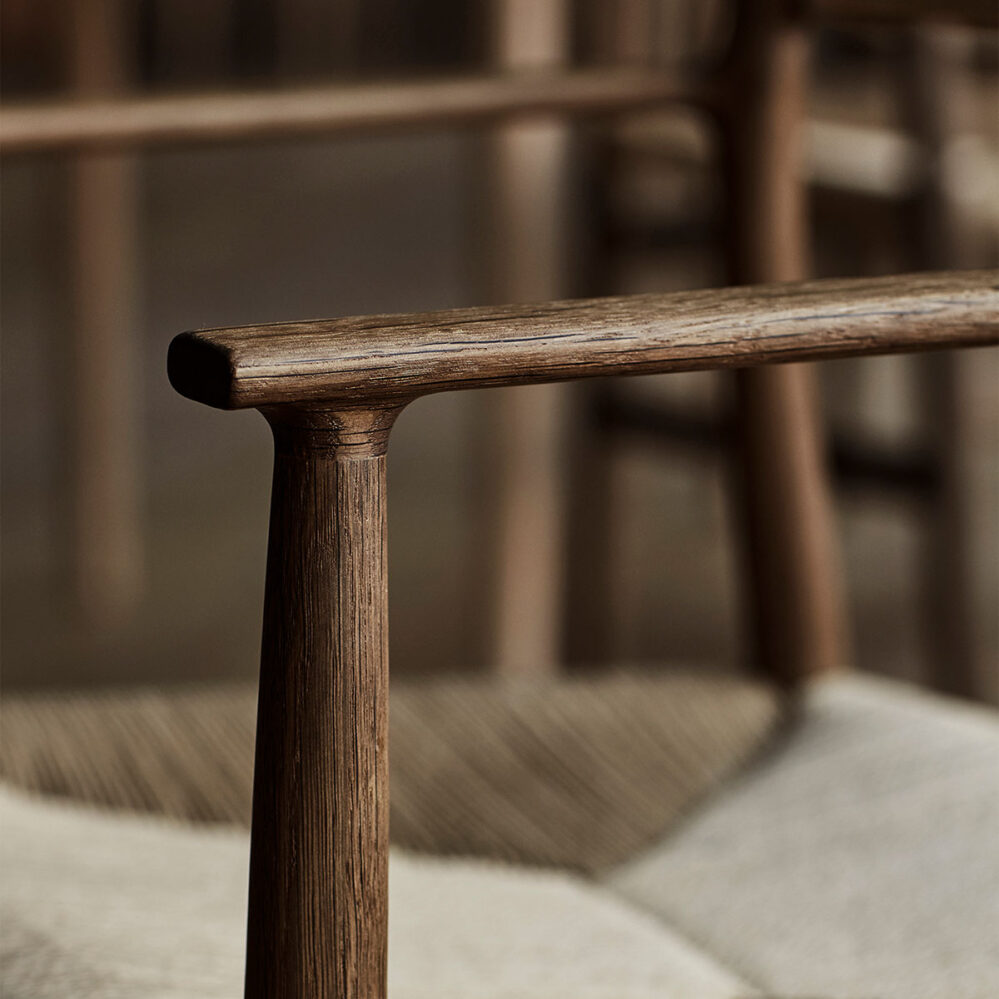
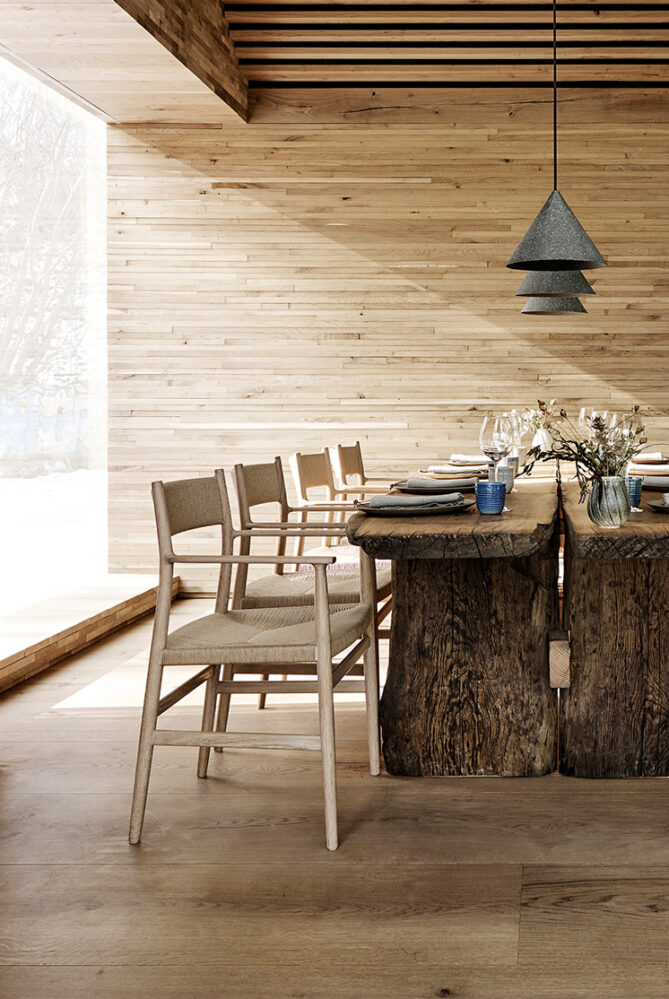
“Everything is carefully selected, curated or designed, and nothing screams more than the other. The whole thing has this sense of coherence and a very 360-degree holistic approach.” David Thulstrup
The mood throughout is quintessentially Scandinavian—honest, simple, and beautifully understated, without falling into predictable Nordic clichés. The materials themselves tell the story: raw wood, treated only minimally, allowing the grain, texture, and imperfections to speak. The one-year-long project involved careful selection of materials and treatments for the floors, walls, and ceilings, as well as custom designing cabinetry, dining tables, and chairs. Thulstrup also designed and developed lighting, curated artwork, and even sourced vintage pieces from auctions, ensuring each element contributed to the restaurant’s organic feel.
This meticulous attention to detail is visible in the furniture’s refined simplicity. Each piece invites touch, offering a tactile connection to the craftsmanship behind it, and reinforcing Redzepi’s desire for a dining experience that feels personal and handcrafted.

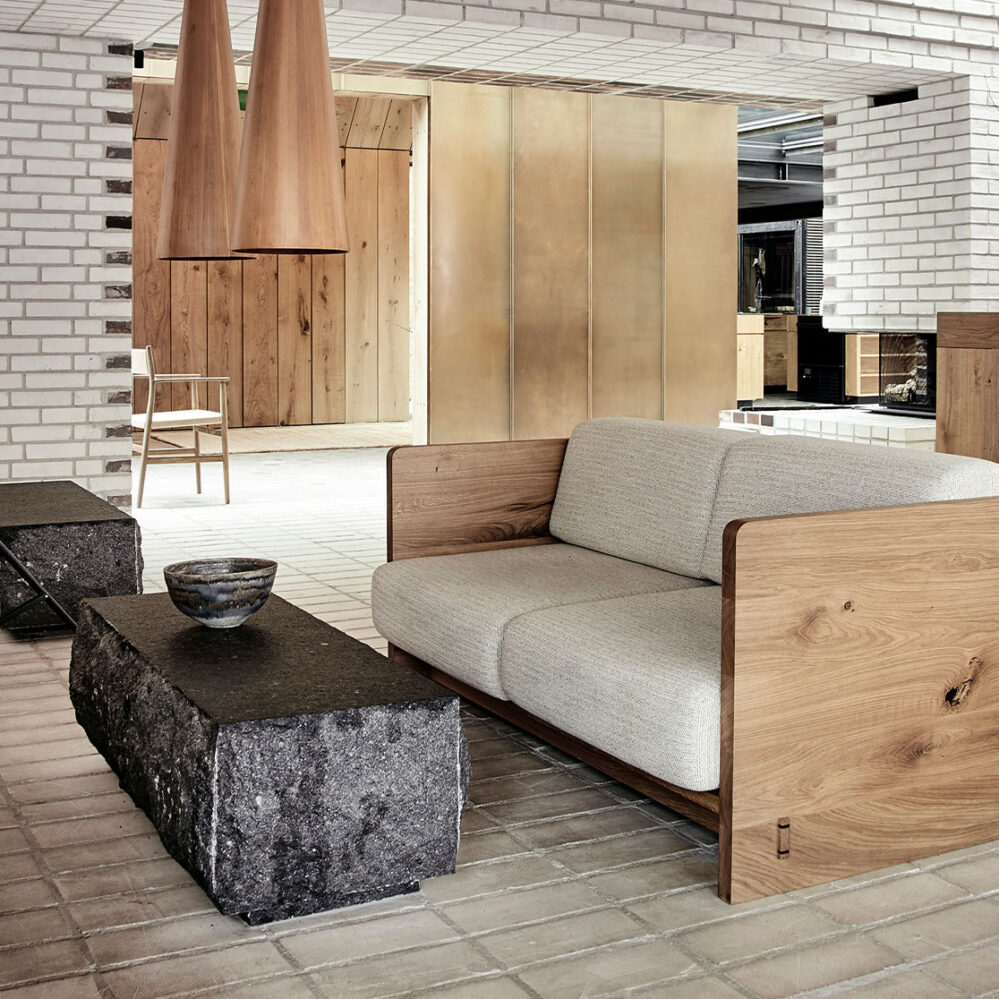
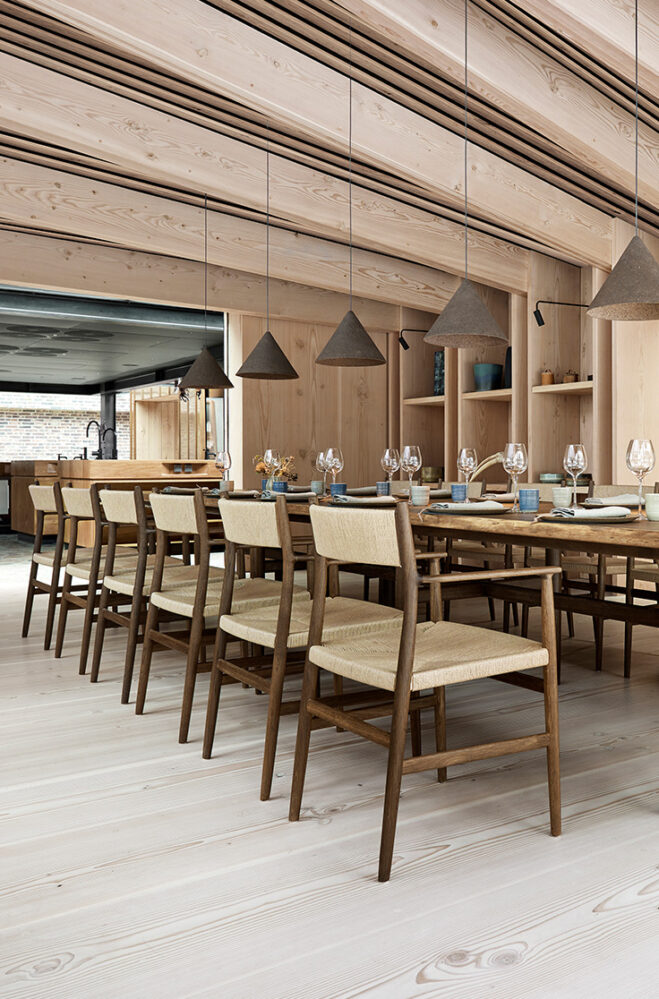
Wood as Art: A Sculptural Presence—
At Noma, wood is not just a material for building and furnishing; it is also an art form. Old, locally sourced wood, left bare and untreated, is erected vertically and horizontally throughout the space, lit like sculptures. These wooden elements add a layer of quiet beauty, standing as organic art pieces that celebrate the rawness and authenticity of the material.
“Everything is carefully selected, curated or designed, and nothing screams more than the other. The whole thing has this sense of coherence and a very 360-degree holistic approach,” says David Thulstrup. This philosophy is embodied in the way wood is presented—as both functional and artistic, integral yet subtle. Each piece adds depth to the space without overwhelming it, allowing the eye to rest and the mind to focus on the culinary experience at hand.
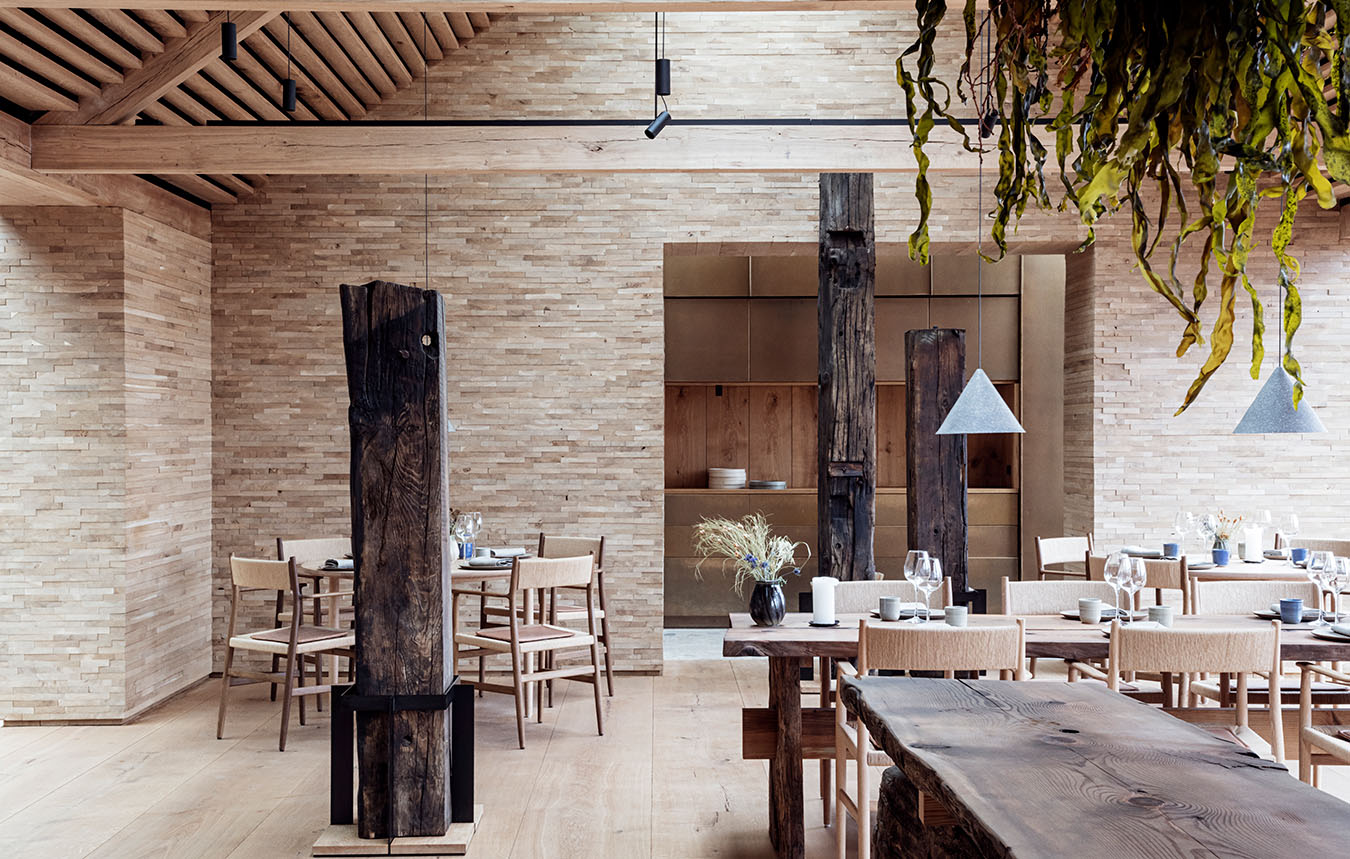
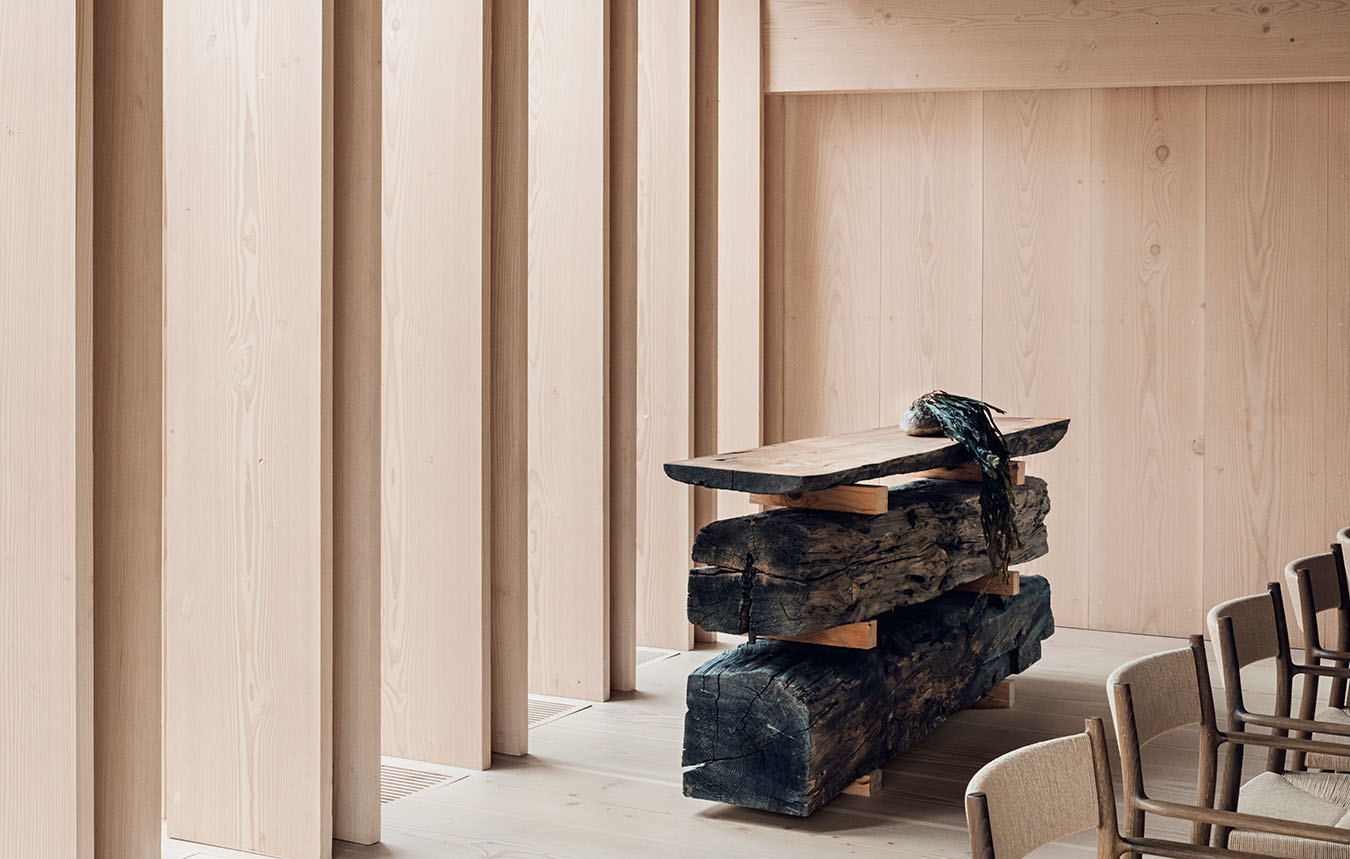

Wood was the ideal choice for Noma’s design, bringing warmth, authenticity, and timelessness to the restaurant’s space. Its discreet, honest presence creates an atmosphere that enhances, rather than competes with, the culinary masterpiece that is Noma. The minimalist, yet rich design leaves room for the food to take center stage, ensuring that the dining experience is the true focus. Through the thoughtful use of wood in architecture, furniture, and art, Noma’s design stands as a testament to the beauty of natural materials and the importance of balance between form and function.






